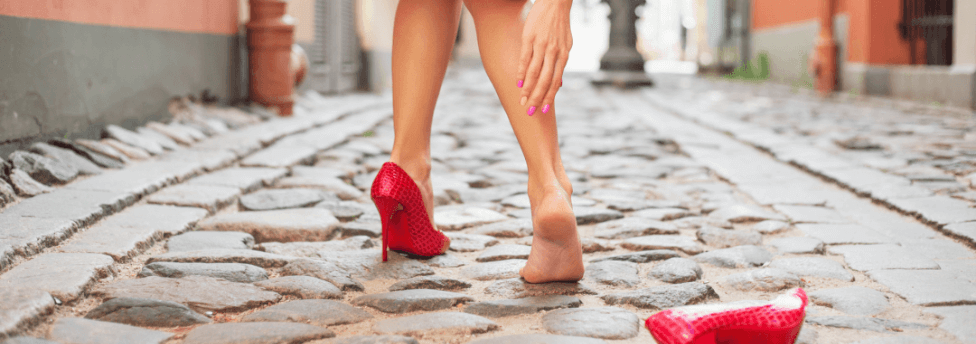Up until the age of 4 almost all children have flat feet. As the child grows, so do their foot arches. Consequently, by adulthood only about 15% have flat feet including, I should add, Usain Bolt, the fastest man on earth.
If I have flat feet should I wear insoles?
So the commonest question asked is whether its worth getting arch supports for flat feet? Before I answer the question lets quickly revisit what the foot arch is actually for. The foot has three arches: two along the length of the foot, known as the longitudinal arches and one that traverses across the foot known as the transverse arch. The arches are formed by the shape of the bones. The strong ligaments that bind the bones together, as well as the tendons and muscles of the feet.
Foot arches allow the feet to act like springs, absorbing any shock taken by the body and allowing them to adapt to different floor surfaces during walking and running.
The Causes of Flat Feet
Causes of flat feet are many but in the main is due to over stretchy ligaments and weak muscles.
Whilst for most flat feet cause few issues. In some patients, their feet can feel tired or they can start to develop pains from overloading the joints, tendons or muscles. This can cause, knee, hip and lower back pains. In these circumstances insoles with arch supports do have a role.
Insoles For Flat Feet
The way an insole works for flat feet is that they check the collapse during single stance (when you are on one leg). However, it’s important to bear in mind that they do nothing to strengthen weak muscles or tension lax ligaments. The best way to think about them is that they bring the floor to your feet, rather than your foot arches collapsing until the whole foot hits the floor (also known as pronation). In a way they provide you with bio-feedback so that as the inside of your foot hits the insole, a message is sent to the brain to tell the muscles in your leg to to pull up the arch, which is actually what they should do.
Exercises for flat feet to strengthen the arch muscles and the small muscles of the feet are the best way to optimise your foot health. An insole can also removes the stress caused by a flattening foot arch, known as pronation by most manufacturers of trainers. Sweeping exercises of the foot to strengthen the muscle known as the tibialis posterior is an excellent way to build an arch. Along with picking up objects (such as socks or small pieces of Lego) with your feet which allows you to work on the small muscles of the feet. We rarely pay attention to our feet which is part of the problem.
Flat Feet Problems

Sometimes flat feet can signify a more serious problem, such as an abnormal connection between two bones in the foot causing a stiff and inflexible flat foot. This is known as a tarsal coalition. The best way to tell if your foot is flexible is to stand on tiptoes. If the foot arches comes back beautifully then the feet are flexible. If the foot arches do not return or the heel stays tilting outwards then you could have a fixed flat foot, which really needs investigating to rule out a bony coalition. If you are concerned, we recommend that you see a specialist for an examination and sometimes a 3 dimensional scan.
This article was written by Mr Andrew Goldberg OBE, a consultant orthopaedic foot and ankle surgeon for adults and children. To contact Mr Goldberg email [email protected] or call +44(0)207 042 1828.
Did you enjoy this article?
You may also like other similar articles:
How to find London’s best ankle surgeon
What can I do for an Ankle Sprain?
Why Do I Have Clicking Joints?
Ten tips to cure PLANTAR FASCIITIS (Heel Pain)

